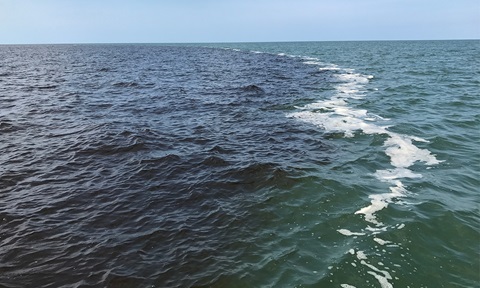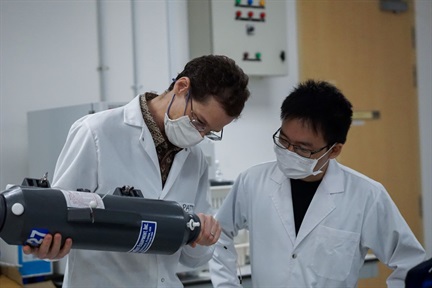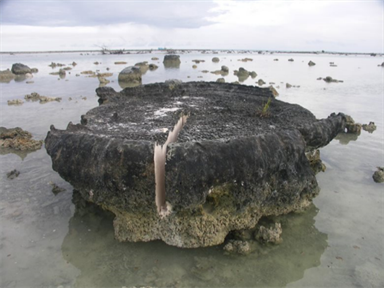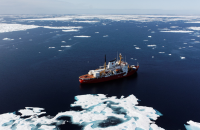How similar are the phytoplankton from Antarctica and the Arctic?
Phytoplankton, tiny algae that thrive in the oceans, is responsible for about 50% of the oxygen we breathe. It is at the basis of many oceanic food chains through a complex array of interactions such as predation but also symbiosis. Understanding how it is reacting to the current changes affecting our planet is critical to predict the future of the oceans. One fast changing ecosystem on earth is the Antarctic peninsula which is subject to strong warming as tropical waters extend more and more southwards. However, in contrast to the phytoplankton in the Arctic, that have been extensively studied in particular through efforts of nations such as Canada, Russia, Germany or Norway, much less is known about Antarctica. In collaboration with colleagues from Chile and France, Assistant Professor Adriana Lopes dos Santos from ASE has been participating in a yearly study of phytoplankton off King Georges Island, the first such study covering all seasons. She used a molecular technique called metabarcoding to record the composition of phytoplankton in DNA samples from Antarctic water samples. The results, now published in Scientific Reports, show that there is clear succession of species during the year: diatoms (glass wall cells) are dominant during the Austral summer while flagellates are replacing them during the other seasons. Using DNA signatures revealed a very interesting fact: While some of the Antarctic species seem to be similar (related) to their Arctic counterparts (e.g. Thalassiosira minima, see Figure), other seem to be different. For example, one dominant diatom called Chaetoceros neogracile present clear genetic differences between the two polar regions. The same is true from a minuscule green algal species called Micromonas polaris which is the most abundant "picoplankton" (cells with a size less than 2 microns) in Arctic waters and was before thought not be abundant in Antarctic waters. The paper establishes that this little green flagellate is not only abundant in Antarctic waters, but its genetic signature is different from the Arctic counterpart. Bipolarity in marine phytoplankton is still an enigma and a hypothesis to be tested at genomic level.
Read the original puplication in Scientif Reports here: Annual phytoplankton dynamics in coastal waters from Fildes Bay, Western Antarctic Peninsula







